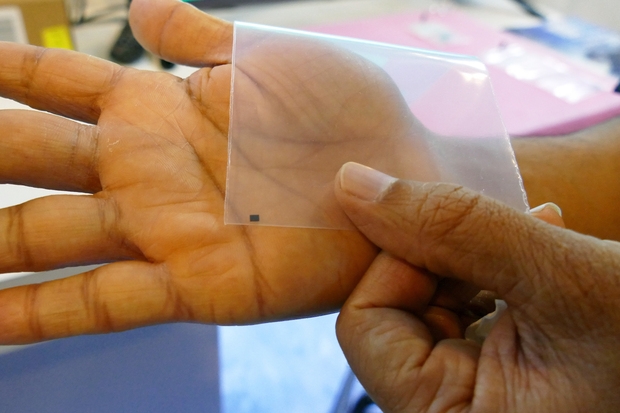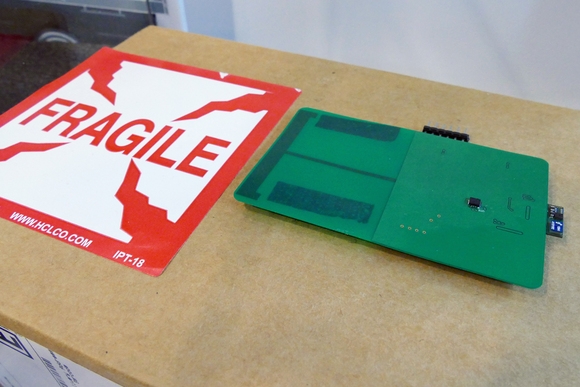
Itworld
This week at the Intel Information Technology Forum, Intel demonstrated the latest R&D results of its own Internet of Things. This is a one-time tag that integrates a micro-control chip. It can determine if the fragile items in the package are intact without power supply.
At the Intel Information Technology Forum in San Francisco on August 16, Intel demonstrated the prototype of this smart tag. This product is affixed to the express parcel, which can chart the motion of the parcel in real time and send it to the server.
Its simple construction requires no external power supply, and the traditional Internet of Things may not even treat it as an IoT system or device, but it is a reliable and practical product. At the same time, for logistics companies, it is low-cost and maintenance-free, saving manpower costs for specialized inspections.
In Intel's demo, a box with a smart tag is greatly shaken under the control of the robot, and the smart tag can map the intensity of the motion in real time through the sensor.

Intel’s staff called this wireless tag chip as micro dust. Its size is similar to that of pepper granules. It uses Intel's latest "quark" architecture, integrates temperature and motion sensors and is the brain of smart labels.
The reduction in the size of the processor brings significant meaning and makes the entire project possible. The first is a significant reduction in power consumption, and secondly, manufacturing costs have also dropped to very low levels.
The micro dust processor does not directly send data to the cloud. It uses low-power Bluetooth to send data to a local gateway that is not far away. The gateway then uniformly sends data of all chips to the cloud. When the network conditions are poor, the gateway may also handle or store data on its own.
“Micro dust is precise and efficient. It only consumes about one milliwatt of power. It can even extract energy from radio waves in the air. For example, a Wi-Fi network on a truck can emit enough radio frequency energy for all of the vehicle's Microcar chip running." Intel Institute Majumder told reporters.
For micro dust chips, there are other sources of energy that can be used. At the information technology summit, Intel also demonstrated its paired fingertip-sized solar panels. However, due to the fact that courier parcels are generally stored in a darkened chamber, the utility of solar panels remains to be verified. The electromagnetic signal in the air is almost everywhere, and it is more practical to use electromagnetic energy.
Mobile phone base towers can be seen everywhere, but these base stations often don't provide enough energy. Majumder said that it is best to drive micro dust chips by installing onboard LTE networks in trucks or using office Wi-Fi signals.
Recommended reading:
What is Intel’s latest chip Xeon Phi against Nvidia?
Deep learning at the hardware level Intel will push artificial intelligence chips next year